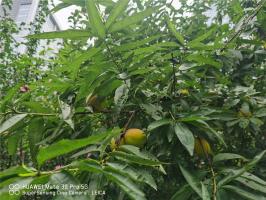How to Move Potted Plants Long Distance
Moving potted plants requires careful and thorough planning, especially when you are moving long distance. In this article, we'll go over the best practices for safely transporting your potted plants to their new home.
Pre-move preparation
The first step in moving your potted plants is to prepare them for transportation. This involves pruning the plants, removing any dead or damaged leaves, and ensuring that any pests are eliminated. You should also water your plants a week in advance so that the soil is neither too dry nor too wet at the time of the move.
Additionally, you will need to choose the right pot for each plant. The pot should be large enough for the plant’s root system and sturdy enough to prevent breakage. You should also consider the plant's species and climate requirements when choosing a pot.
Packing and Loading
After preparing your plants, it is time to pack and load them. You’ll need to acquire sturdy and durable cardboard boxes that are roughly the same size as your plants. Make sure the boxes have holes in the sides to allow for proper airflow. You should also add sufficient padding to the bottom of the box to prevent breakage during transportation.
You have two options for loading your plants. You can either stack them carefully one on top of the other, or you can place them in individual boxes, which are then stacked. In either case, ensure that the boxes are only stacked as high as they can be safely transported without falling over.
Transportation
Moving your potted plants requires cautious and gentle handling. Properly loading boxes into your moving truck is essential to avoid damages. Avoid exposing your plants to sunlight, wind, or rain that may damage them.
You need to be concerned more about the temperature of the moving truck than the climate inside the vehicle. Most plants require a temperature range of 60-75 degrees Fahrenheit. You can use a thermometer to monitor the temperature in the moving truck regularly.
Unloading and Replanting
Once you arrive at your new home and begin the unloading process, avoid placing your plants under direct sunlight right away. Instead, acclimate your plants slowly, allowing them to adjust to the temperature and light conditions.
After the acclimation process, it is time to replant your plants. It would be best to use a nutrient-rich soil that meets the specific requirements of your plant. Watering them adequately is also crucial, and you should make sure the soil is moist but not wet.
Conclusion
Moving your potted plants can be a challenge, but following these steps can make the process much smoother. With proper preparation, packing, and transportation, you can ensure that your plants are safely transported to their new home stress-free!

 how many times do yo...
how many times do yo... how many planted tre...
how many planted tre... how many pine trees ...
how many pine trees ... how many pecan trees...
how many pecan trees... how many plants comp...
how many plants comp... how many plants can ...
how many plants can ... how many plants and ...
how many plants and ... how many pepper plan...
how many pepper plan...





























